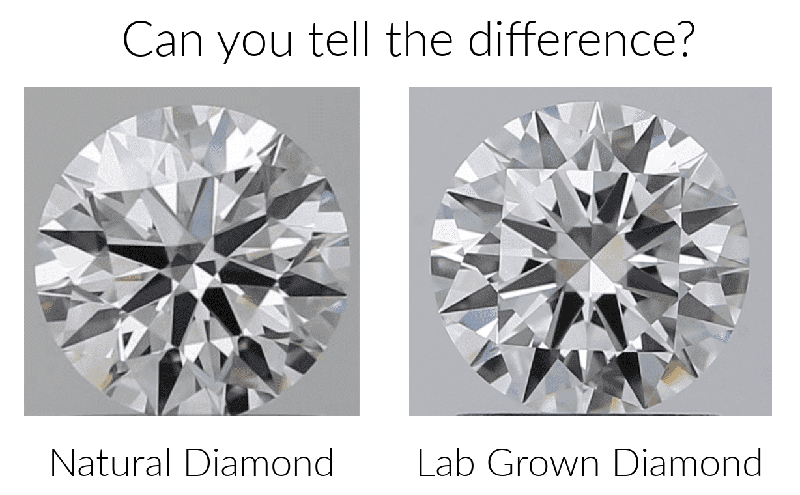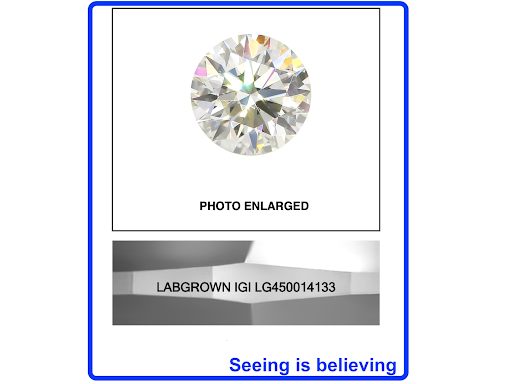Should You Buy Synthetic Diamond Rings?
Synthetic Diamonds - Aka Lab Grown Diamonds
Lab Created Diamonds are a great option for those who want to invest in the beauty and durability of a diamond at a steep discount. The definition of a synthetic (lab grown) diamond in the jewelry trade is a stone that has the same chemical, physical, and optical properties as the natural option. The only difference between them is that synthetics are grown artificially at an accelerated pace. Both colorless and colored synthetic diamonds are marketed as cheaper alternatives to natural stones with no drawbacks.
Until recently, synthetics could be identified by trained gemologists. Now, the technology has progressed to the point that only advanced scanners can separate natural from the best synthetic material. Additionally, you can find synthetics in almost as many colors as natural diamonds. This means that you can find large stones, colorless or colored, for relatively low prices. As such, they are a fantastic substitute to natural stones!
The first diamond synthetics were produced in the 1950s. Today, there are two primary methods used to grow synthetic diamonds: high pressure, high temperature (HPHT) and chemical vapor deposition (CVD).

High Pressure, High Temperature Method
HPHT was the first method used to grow diamonds, and it remains the most popular technique. Basically, HPHT mimics the natural environment in which diamonds develop in the Earth. A carbon source is placed in the machine along with a few other chemicals as well as a small diamond called a “seed crystal”. These elements are subjected to (you guessed it!) high temperature and high pressure for anywhere between a few hours to several weeks. Fast-forward a bit and – presto! - you have a shiny batch of brand-new diamonds!
This process is conceptually straightforward. As such, you might think that progress, in terms of size and quality of the stones, would have come quickly. However, it was not until 1970 that the first gem-quality stones were finally produced. It would not be until the 1990s that HPHT synthetics would make a significant impact on the diamond market. Currently, much of the high-quality HPHT material is produced in China and Russia. HPHT diamonds account for most of the lab grown melee on the market, with over 200,000 carats produced annually.
Chemical Vapor Deposition Method
The CVD method is nothing like the natural growing process, involving material that grows out of an aerosolized soup of carbon and other chemicals. Essentially, a small, flat seed crystal (usually an HPHT synthetic diamond) is placed at the bottom of a growing chamber while carbon rich gasses, consisting of primarily hydrogen (95%-99%) and methane (1%-5%), are injected into the chamber and heated by a microwave beam to around 1000ºC. The gas molecules split and the atoms are attracted to the cooler seed crystal. They "rain" down slowly forming layers of CVD grown diamond.
What’s great about both manufacturing methods is that their outcomes are highly predictable. Depending on how each process is conducted, scientists have a good idea of what color, clarity, and size of diamond is going to be produced. In the early years, synthetic material was an unappealing yellowish or brownish color. As techniques evolved, beautiful colorless and colored stones, some with flawless clarity, started being grown in large sizes. Stones may be subjected to further treatment after being grown to alter/enhance their color. As a result, you can also find synthetics in blues, greens, pinks, reds, oranges and more!
Some individuals are skeptical, or even suspicious, of synthetic diamonds and are concerned that some of this material may find its way into jewelry without their knowledge. Here’s the good news… according to the Federal Trade Commission, sellers must have “clear and conspicuous disclosure” when it comes to marketing their diamond synthetics. This means that sellers must use terms like “laboratory-grown” and “laboratory-created” when selling all diamond synthetics. Additionally, the burden falls on them to be sure that you, the buyer, understand these terms. As always, sticking with reputable sellers helps to ensure that your purchase is legitimate. If the stone that you are considering comes with a report from a professional laboratory like the IGI, not only will it be clearly stated on the report if that diamond is synthetic, but the stone itself will be laser inscribed.

Many companies are proud of their synthetic products and have their stones laser inscribed. There are companies who proudly sell only synthetic material. As the market for synthetics is still relatively new, it is hard to say what kind of value your synthetic stone will hold over time. However, if resale value is not a concern, a synthetic option might be your chance to have the diamond of your dreams!

